Editor’s note, August 2023: Looking to help victims of the Maui wildfires? Right now, the best way to help is through cash donations. Here are a few organizations that are on the ground getting resources to the people who need them on the island:
The Maui Strong Fund, run by the Hawai’i Community Foundation
hawaiicommunityfoundation.org
Maui Recovery Fund
secure.actblue.com/donate/mauilonghaul
The Maui Food Bank
mauifoodbank.org
The Kākoʻo Maui Fund by The Council for Native Hawaiian Advancement
memberplanet.com
On the wavy highway that hugs the sea on the western side of Maui, road signs remind drivers of the minimum speed limit. Maybe it’s the way the setting sun glitters on the water, fierce and hypnotic, maybe it’s the palm trees nodding from the beach, or maybe it’s just the wind carrying the sound of the waves, but Maui makes you want to slow down—or stand still. From muscular volcanic ridges to primordial valleys, historic mountainside settlements to plush waterfront resorts, this 727-square-mile Hawaiian island offers more than enough to make you linger well past three perfect days. The Valley Isle is currently seeing an influx of visitors more unstoppable than a lava flow, but it’s business as usual no more: With renewed respect for the environment after last year’s respite from tourism, Maui is starting a new chapter. The Hawaii Tourism Authority, teaming up with local partners, is launching programs so you can mālama (protect and preserve). So slow down, indulge, and give in—and also give back to this remarkable place.
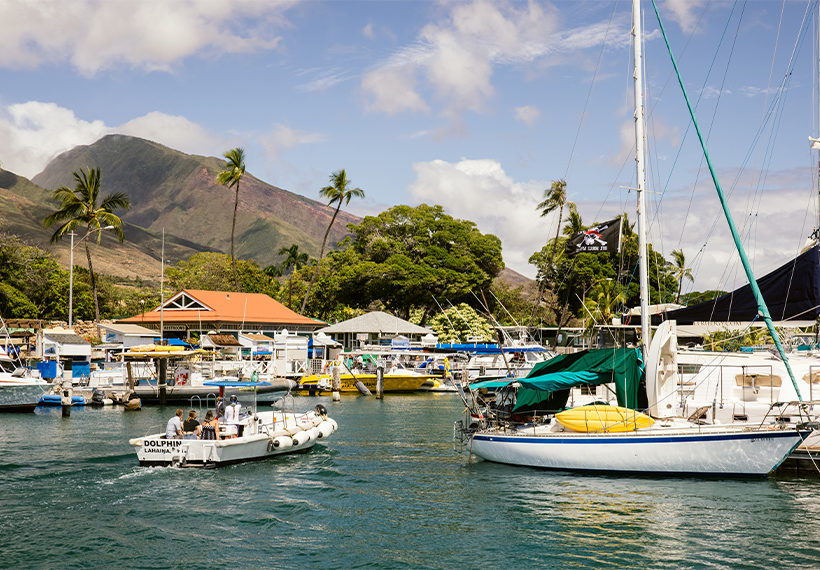
Day 1
Uncovering history and hiking through beachfront lava fields
Among this secluded community’s resorts, Montage Kapalua Bay is the most upscale, and a certain mega–pop star is said (by her sleuthing Instagram followers) to be staying here. I feel a little bit like a star by proximity as I check in for my appointment at the spa, which consists of a village of bungalows that serve as treatment rooms. Inside one of those hales, its wall opening to the lush foliage outside, a masseur named Bo gives me what might be the best massage of my life. Lomilomi, a Hawaiian technique, makes use of long, firm, wave-like strokes, and Bo kneads me until I’m convinced I’m floating on the sea.
My legs are soft like dough, and it takes a few minutes to get my bearings as I head out for a hike on the Kapalua Coastal Trail, which traces the ocean’s edge. Past the daredevil cliff jumpers plunging into Namalu Bay, I reach a field of lava rocks that jut out to greet fluffy clouds and grand waves. The white sky parts, and the sun casts a dramatic spotlight on the water. I’ve never been spiritual, but this moment is about the closest I’ll get to a religious epiphany.
The trail goes right by Banyan Tree at The Ritz-Carlton, Kapalua, so as the sun sets I settle down at a table among the honeymooners and families. The kitchen jazzes up heirloom tomatoes and microgreens from Hua Momona Farm, just up the hill, with buffalo mozzarella and balsamic vinegar. The garlic-glazed ribs melt almost like chocolate in my mouth; pineapple sambal brightens steamed mahimahi in a bath of green curry. God knows how, but I finish every bite.
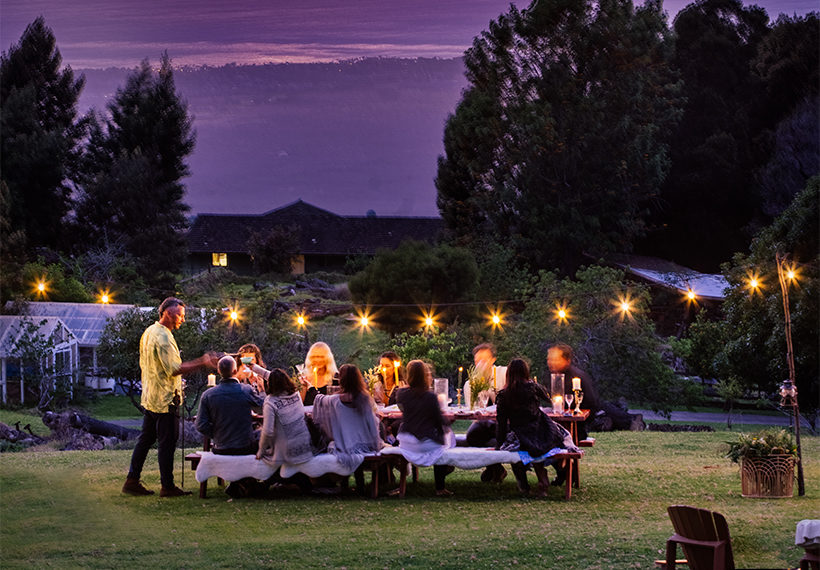
Day 2
Shopping in eclectic Makawao and dining alfresco upcountry
I wake up to a pastel sunrise. My balcony is bigger than my apartment back home, and I could easily spend the day lounging here, but I tear myself away and head inland. In the mountain town of Makawao, there’s a line out the door at Komoda Store & Bakery—and it’s barely 9 a.m. Behind the counter, a sun-faded five-year-old sign still hangs, celebrating the mom- and-pop store’s centennial. By the time it’s my turn to order, the famous guava malasadas (sugarcoated Portuguese donuts) are sold out. Chocolate cream puffs? Poof, gone.
“The last batch came out five minutes ago,” one of the ladies behind the counter explains apologetically, “and a customer snapped up the whole tray. Try us again tomorrow?”
No matter. As I amble about this little country town, I’m happy with my chewy coconut twist.
Upcountry, as the western slope of the 10,023-foot volcano Haleakalā is known, is the island’s breadbasket—and amid the organic farms growing strawberries and sweet onions stand quirky outposts like Makawao. While the early-20th-century wooden bones of this former settlement of Japanese and Portuguese laborers are still intact, the town has become a leisurely shopping hub that just might have the island’s—if not the country’s—highest per-capita counts of essential oils and amethyst crystal jewelry.
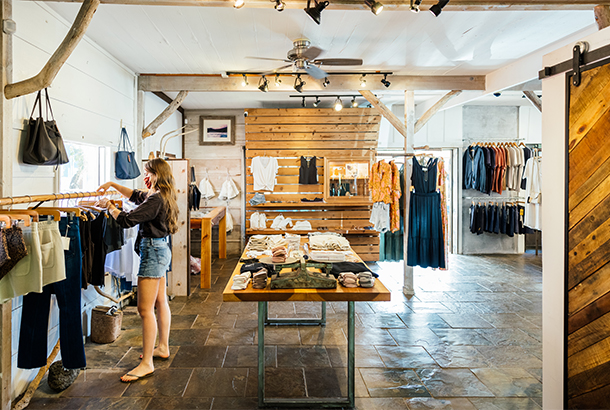
“Makawao has a special energy. There’s nowhere else I’d rather be,” says Desiree Martinez, who opened her clothing boutique Pink by Nature on the town’s main drag 17 years ago. “It’s always been a secret shopping spot for locals. Visitors are surprised by the selection.”
A few doors down, I feel a little too uncool to step into Holoholo Surf. The white-walled shop sells longboards, as its name suggests, but also breezy caftans and swimwear designed by owner Julie Stone. As I peruse the updated Hawaiian shirts, I eavesdrop on the shopkeeper, Tamika, chatting with two customers about the time they went… “running rocks”?
“Oh, that means holding your breath underwater and carrying a boulder,” she explains, noticing my confusion. “A lot of surfers here train by running rocks underwater.”
I leave her to her plans to alter ocean topography and meander into the courtyard. In the bright sun, rain mist casts fleeting rainbows all around. Between roosters’ rude cock-a-doodle-doos, more modest and melodious birdsongs fill the air. This is where I run into Britney Texeira, a millennial who grew up in Makawao and runs her family business, Haku Maui, making leis and leading workshops on how to do so.
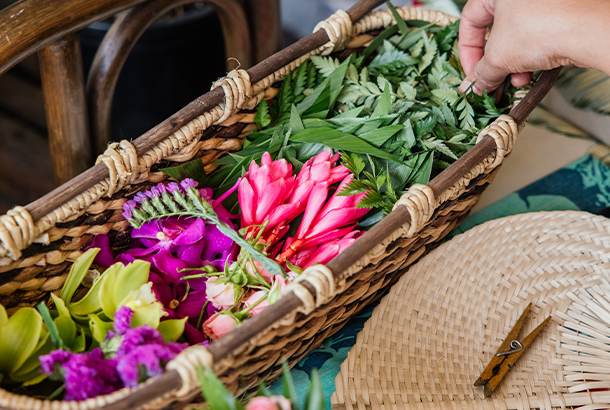
“The lei is much more than a pretty necklace of purple orchids, which aren’t even from Hawaii,” she says. “A lei around your neck resembles the way a child embraces their mother—that’s how much love goes into it.” Texeira is part of a generation of Hawaiians who grew up immersed in the native culture after decades of it being suppressed in schools, and combating misconceptions about the lei is more than a profession for her; it’s a mission. “Plants evoke memories and represent our land,” she says. “A lei is a sign of life, an extension of the place to the self.”
I thank Texeira for the wisdom and make the 10-minute drive to Hali’imaile General Store. This popular restaurant prides itself on supporting area farmers, so I order a vibrant salad sourced from upcountry farms. (Oh, all right, you got me: I also have a crunchy-juicy fried chicken sandwich. And a Maui Brewing Company Coconut Hiwa Porter.) The salad, with delicate baby gem lettuce and bursting-ripe cherry tomatoes, is as fresh as it gets, and it makes me curious about what it takes to grow food in a state like Hawaii, which relies on outside shipments for around 90 percent of its food supply. Am I being unethical by eating lettuce and tomatoes, which were introduced long after the first Polynesian settlers arrived?
I decide to get to the root of the issue by heading to Native Nursery, which specializes in indigenous plants. (The nursery is appointment-only; for a more accessible self-guided plant tour, check out Maui Nui Botanical Gardens.) I’m meeting with Andrea Buckman, a conservation expert and the founder of Uhiwai O Haleakalā, a sponsor of the Leeward Haleakalā Watershed Restoration Partnership, which aims to restore dryland forests on Haleakalā where 200 years of overgrazing and its aftereffects have left less than 10 percent of the area’s historical forest cover intact.
“Leeward Haleakalā’s been called the extinction epicenter of the Pacific,” Buckman says. To revive the ecosystem, workers collect seeds from stands of surviving native plants (some of them in remote gulches), grow them into seedlings, and then replant them. “Native forests replenished aquifers, streams, and springs that supported traditional agriculture, prior to Western contact,” Buckman says. “I see restoration as essential to our need for increased food and freshwater sovereignty.”
In other words, Maui depends on healthy forests of native trees in order to grow the food necessary for self-sufficiency. To contribute to this effort, the coalition manages more than 45,000 acres, combating invasive plant species and maintaining fences to keep out insatiable animals, including deer.
Oh, the deer. Bambi may look innocuous, but without predators, this jumpy species is wreaking havoc on Maui. One man, Yeshua Goodman, is taking matters into his own hands, and so I head over to his pop-up dinner party, Kiawe Outdoor, to find out more.
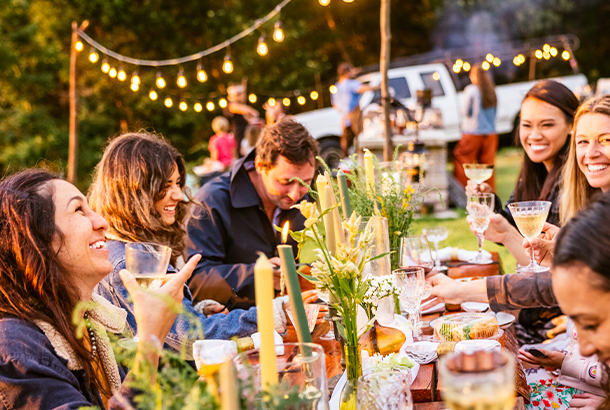
On a green slope, I find made-for-Instagram picnic tables set with proper silverware and porcelain, as well as perfect floral arrangements of rare yellow ohia blossoms spilling out of sugarcane stalks. Fairy lights blink on. Here, Goodman, who was born on Hawaii and raised on Maui, leads a team of chefs that cooks everything outdoors, sometimes using ingredients he collected himself.
“Venison tartare?” he asks, offering me a plate of hors d’oeuvres. He surely reads the hesitation on my face. “I hunted the meat myself yesterday. It’s not gamey at all.” He’s right. It’s delicious enough to erase all my unpleasant venison memories.
The artfully plated courses might also include charred carrots accompanying local Surfing Goat Dairy cheese, or ono (wahoo) smoked for four hours and drizzled with miso yuzu broth. Charred octopus sitting on coconutty taro leaf purée—a take on traditional luau fare—is paired with a Basque txakoli wine. My fellow diners, strangers gathered from around the country, are all traveling for the first time since the pandemic began, thanks to COVID vaccines, and we’re eager to gab.
“The only acceptable abs-to-unbutton ratio is three to one,” jokes one of my tablemates, recalling an unwanted advance by a scantily clad gentleman at a resort bar earlier. “If you have six packs, you can unbutton two, no more.”
The whole table erupts in laughter. I feel a little nostalgic already. It doesn’t matter that I’m unlikely to see these people again; it’s a privilege to share this fleeting moment.
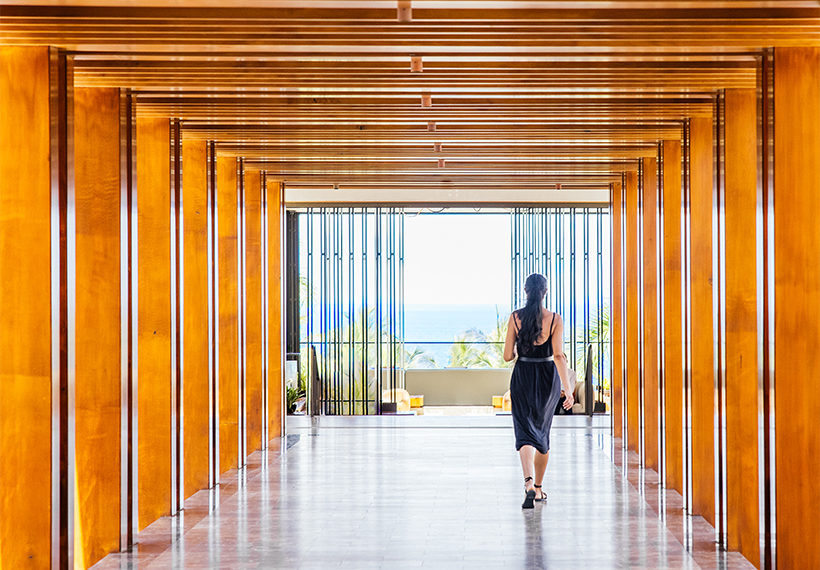
Day 3
Kayaking with turtles, cooling off with shave ice, and marveling at Haleakalā
It’s just after 7 a.m. and I’m gliding on the surface of the Pacific, just off One’uli Beach in Makena State Park. As I slide from my kayak into the water, I see a manta ray with a wingspan several times my height grazing the sea bottom. How do you top that? Easily, it turns out, as I’m soon joined by a green turtle who swims alongside me for a few moments before heading its own way.
“They can speed up to 35 miles an hour,” says Curtis, my guide with Maui Kayak Adventures. “If they don’t want to be around you, they won’t be.” Suddenly, he gasps. “Look! It’s Dana!” he shouts, pointing. “She’s having breakfast!”
Dana is a honu‘ea, or hawksbill turtle, a critically endangered species. Only 277 of them are currently sighted in the Hawaiian archipelago, and only about 15 females are seen nesting each year. Her species may be threatened, but Dana doesn’t seem intimidated by our presence. She takes her sweet time picking out sponges from the corals, 20 feet below me.
Morning made, I climb back onto my one-person kayak to marvel at the above-water scenery. The intricate southwestern shore of Maui alternates between soft sand and sharp rock, meeting forceful waves but still looking so chill with its waving palms. Shimmering across the sea is the imposing mountain-scape of Kaho’olawe, which lies only seven miles away. Decades after the devastation of the U.S. Navy’s bombing exercises, the smallest of Hawaii’s eight major islands is now healing, with many environmental restoration projects underway. Maybe someday that rocky slope will be covered with hardy native trees grown from the seedlings I saw yesterday.
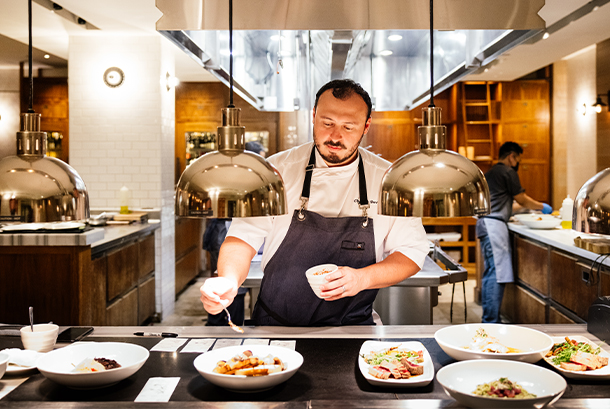
I return my kayak and head to the angular-chic Andaz Maui at Wailea Resort for an early check-in and a breakfast of mochi waffles at Ka’ana Kitchen. Even though my bathing suit’s barely just dried, I go right back to the ocean on one of the hotel’s paddleboards. Maui’s water just has that addictive quality. Gliding past hobby fishers and kayakers, I charge toward Lanai, which looms across the channel like a birthday hat. The sea is so gentle that I can lie down on the board and close my eyes, not caring which way the waves carry me.
The waves decide on Maui, and it’s time for me to cool down. Shave ice should be every visitor’s daily indulgence, and I always find myself returning to the classic, Ululani’s. Despite my misgivings about businesses with multiple locations, Ululani’s distinguishes itself with housemade purées and syrup and delicate flakes of ice. The extra-fine shavings of ice, doused in passion fruit, orange, and guava syrups, are almost creamy, but I go extra-smooth with a “snow cap” (a rich helping of sweetened condensed milk). Strike what I said about this being a daily indulgence; I could eat shave ice every hour.
The only thing left on my agenda is the island’s imposing volcano, Haleakalā. But first, a pit stop to pick up takeout to enjoy on my hike. Only one place will do.
Tin Roof, in a strip mall in Kahului, is a one-counter operation run by Top Chef fan favorite Sheldon Simeon and his wife, Janice. Two vacationers from Honolulu, while picking up their orders of double-fried chicken sandwich and wok-fried ginger pesto chopped steak, recognize the celebrity chef working behind the counter.
“Can we get a selfie?” asks the starstruck customer, and Simeon steps out and graciously smiles for the phone.
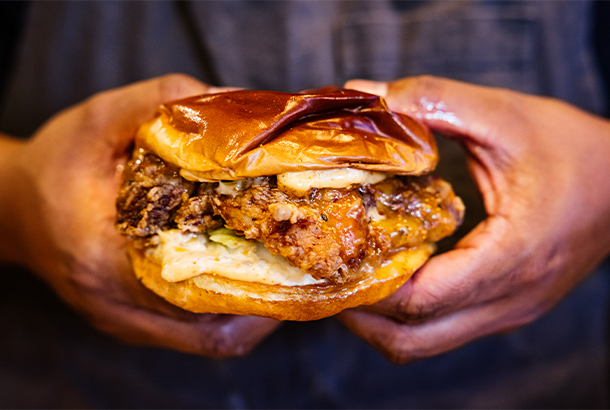
“Without the tourists, all the restaurants had to adapt,” Simeon tells me. “I’m excited the islands are busy again. We’re going to see a lot of creativity coming through after last year’s break.” He acknowledges, however, that the return of tourism is a double-edged sword. “Now that we saw Maui with so few people, we can’t go back to what tourism used to be like. We need to meet somewhere in the middle. We want to welcome travelers, but we also need to educate them that we have limited resources.”
For Simeon, this means using more island ingredients, such as breadfruit. In any given week, he goes through about 80 pounds of this “canoe plant,” one of the original species brought by the Polynesians, in order to make his macaroni salad unique.
With my box of spicy kajiki (marlin) poke on cold noodles, I’m finally ready for the island’s most recognized icon. Sure, every tourist’s heard of Haleakalā. So what? Sometimes, a favorite warrants its place on the podium. It takes two hours, give or take, to travel the hairpin highway that’s just short of 40 miles, transporting me from sea level to above 10,000 feet. This is the first time I’m donning anything other than flip-flops and shorts since touching down. The sun’s still strong, but so are the gusts pummeling me the moment I step out of my car near the summit.
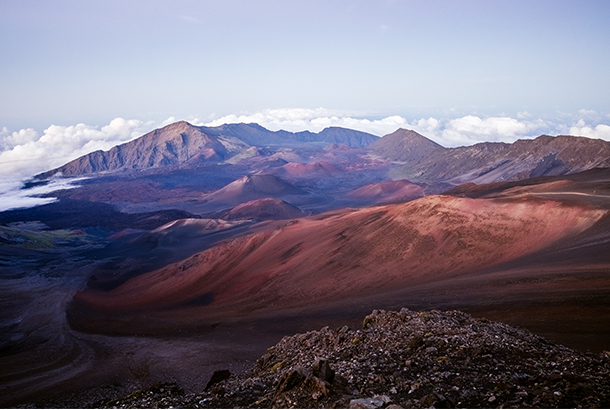
Sunrises here are so popular that entering the park before 7 a.m. requires an impossible-to-get ticket, reserved months in advance. This afternoon, though, the 11-mile Keonehe‘ehe‘e Trail is empty. I descend toward the crater, the ground crunching under my feet. I’m breathless, probably from the thin air and definitely from the sight of this Mars-scape. Hardened lava and volcanic ash of many hues surround me; silver- swords shimmer alongside.
By the time I return to the visitor center, the sun is just about burrowing into the blanket of clouds below. The oldest exposed lava here is said to be more than a million years old. I know the island of Maui will survive, with or without the tourists. If this trip has taught me anything, it’s that slowing down and learning to mālama is the only way for us to be around to witness this beauty for years to come.
Maui Magic: Instagram-worthy island life is closer than you think. Fly to Maui nonstop from Chicago, Denver, Los Angeles, Newark/New York, and San Francisco. Book at united.com/maui.
Chaney Kwak is the author of The Passenger, out now from Godine.




